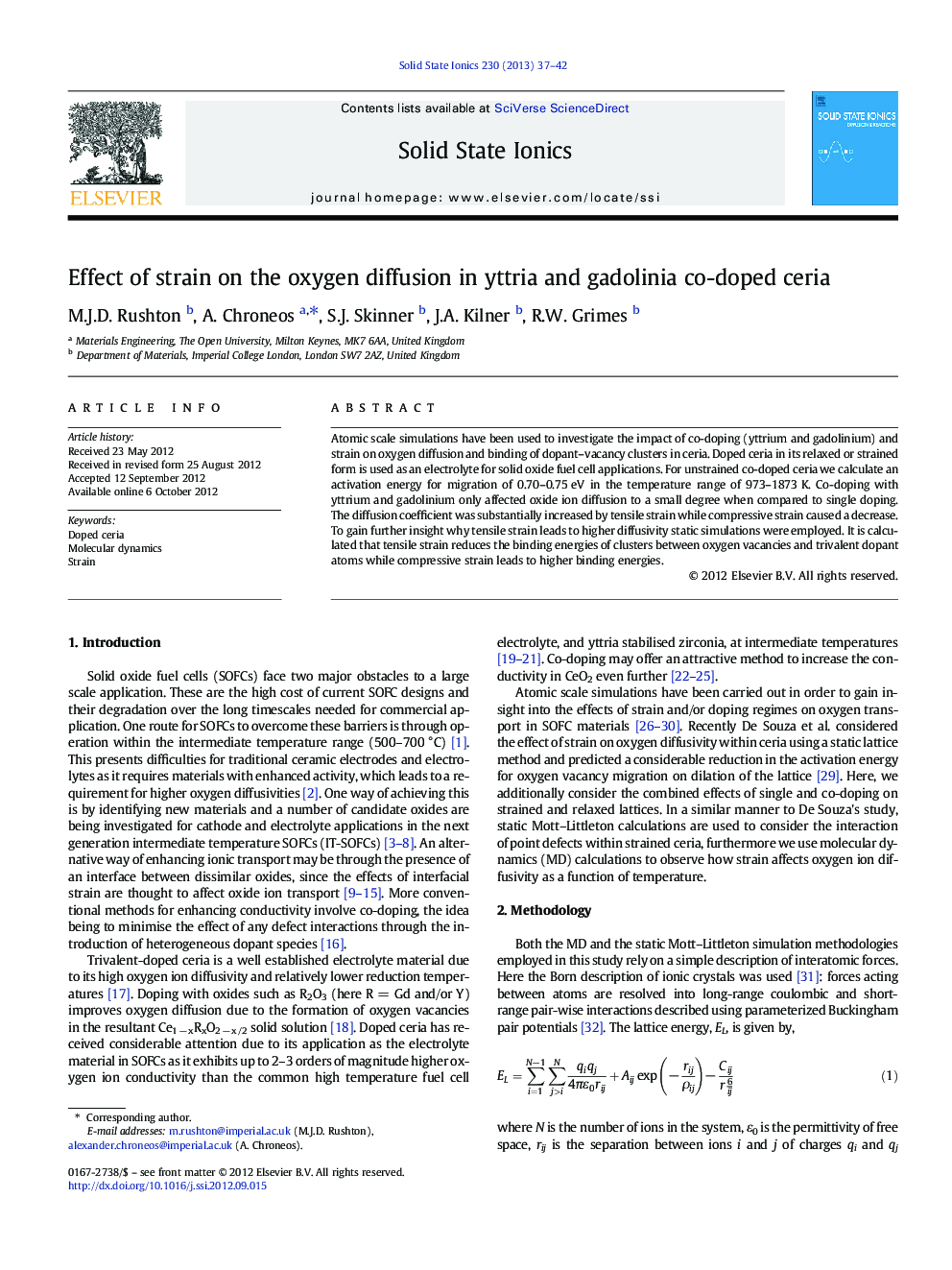| Article ID | Journal | Published Year | Pages | File Type |
|---|---|---|---|---|
| 1298140 | Solid State Ionics | 2013 | 6 Pages |
Atomic scale simulations have been used to investigate the impact of co-doping (yttrium and gadolinium) and strain on oxygen diffusion and binding of dopant–vacancy clusters in ceria. Doped ceria in its relaxed or strained form is used as an electrolyte for solid oxide fuel cell applications. For unstrained co-doped ceria we calculate an activation energy for migration of 0.70–0.75 eV in the temperature range of 973–1873 K. Co-doping with yttrium and gadolinium only affected oxide ion diffusion to a small degree when compared to single doping. The diffusion coefficient was substantially increased by tensile strain while compressive strain caused a decrease. To gain further insight why tensile strain leads to higher diffusivity static simulations were employed. It is calculated that tensile strain reduces the binding energies of clusters between oxygen vacancies and trivalent dopant atoms while compressive strain leads to higher binding energies.
► Compressive strain leads to lower diffusivity and tensile strain to higher diffusivity. ► Tensile strain reduces the binding energies of clusters between oxygen vacancies and dopant atoms. ► Compressive strain leads to higher binding energies.
